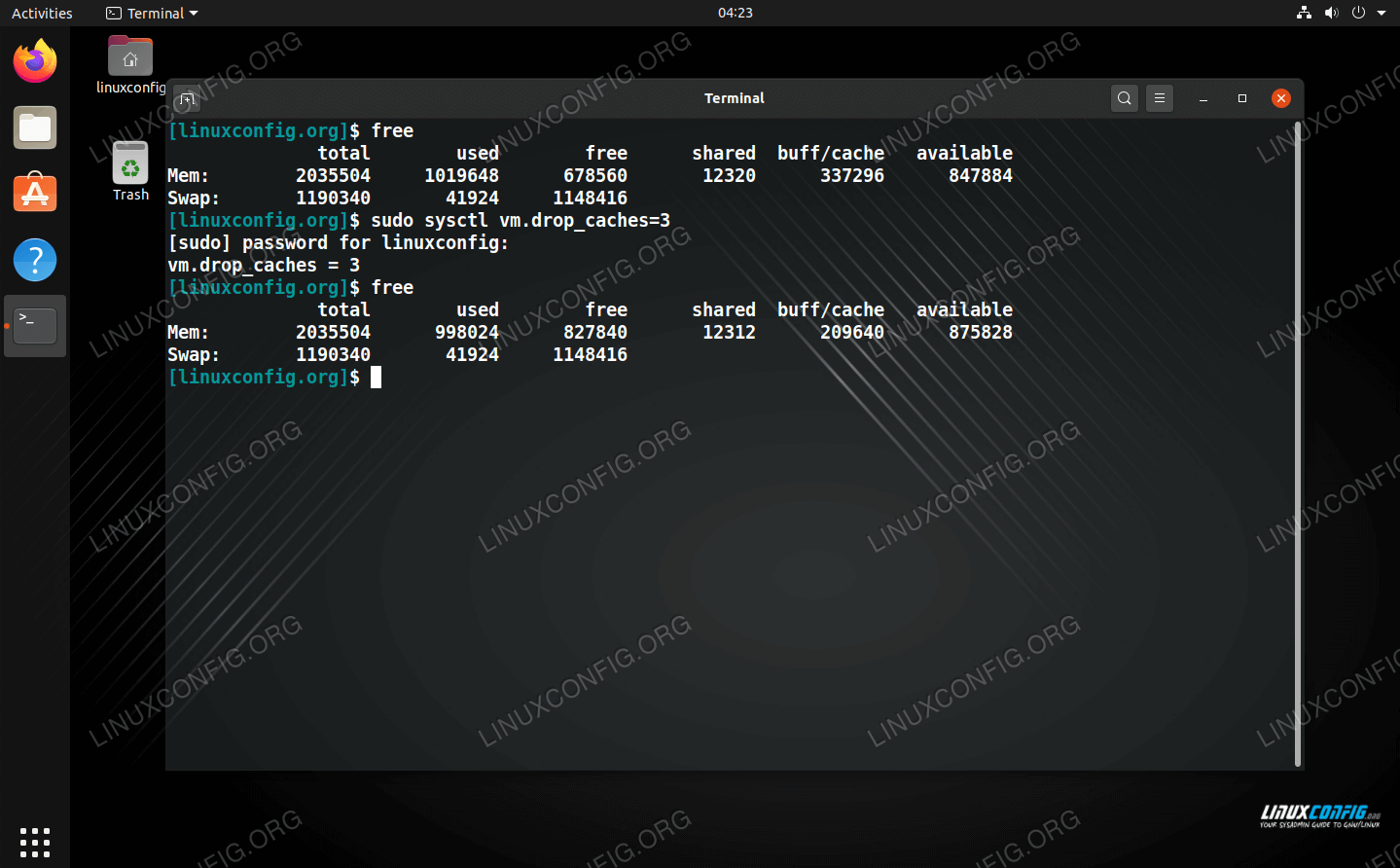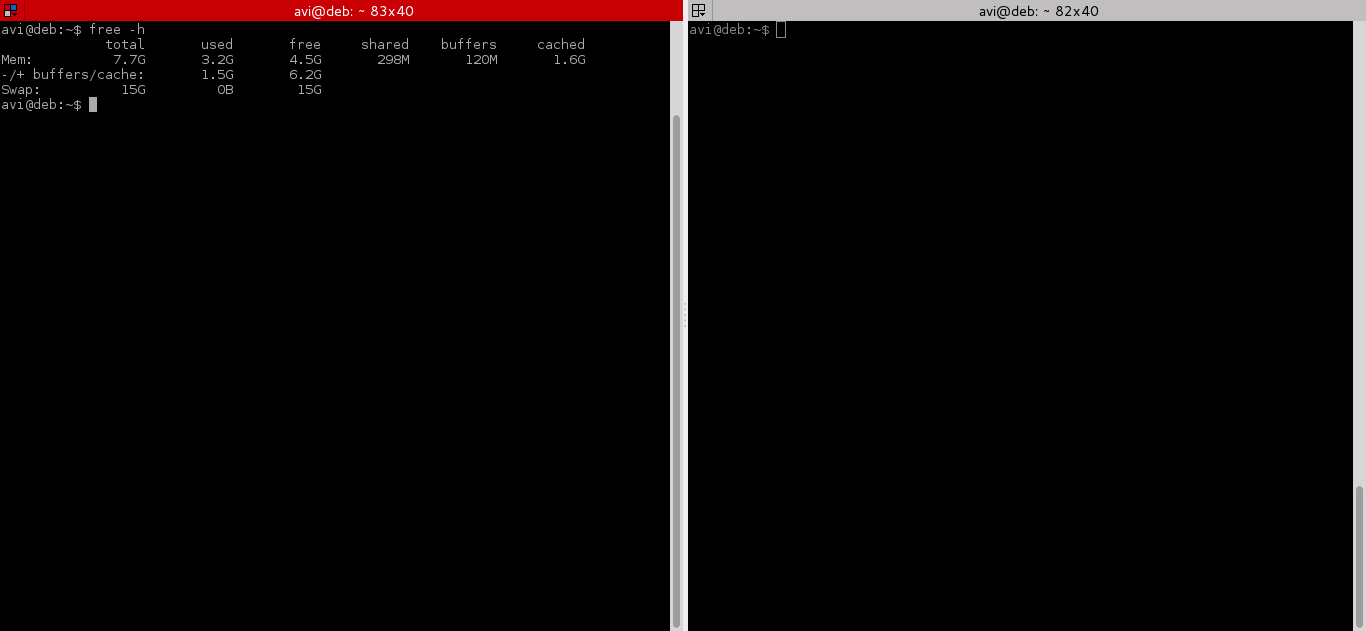Show activity on this post. This is the amount of memory that is committed to physical memory and is unique to a process.

Clear Cache On Linux Linux Tutorials Learn Linux Configuration
From the output of this command.

. Pidof memcached Alternatively use pgrep command to lookup process PID enter. Type the following pidof command to find the process ID of a running program called memcached. So this will not help.
Hi there thanks for the question. If that data needs to be read in the future it is already in storage. Disk caching makes the system much faster and more responsive.
1Different process has different cache footprintThe process of larger cache footprint maybe pollute cache memory spacewhich reduce performance. To determine the size and usage of memory you can enter the following command. Account for the total of used and buffcache in your calculation for a comprehensive view.
To clear PageCache only use this command. Then I could clearly see cache value been increased with 10 in MB. So the files you opened will eating the memory too.
Ps -o piduser mem command ax sort -b -k3 -r As you can see all the processes with memory usage in percentage is listed in descending order The processes using most of the memory is listed first. We can see the buffer cache usage has gone up from 667 to 1735 Megabytes a roughly 1 Gigabyte increase in the usage of the buffer cache. Lslocks lists information about all the currently held file locks in a Linux system.
The linux kernel provides an interface to drop the cache lets try out these commands and see the impact on the free setting. Vmstat Command to Report Virtual Memory Statistics. You can check memory usage in percentage of all the process running on your Linux operating system with the following command.
To find out processes wise memory consumption you may use pidstat command which is part of the sysstat package. In 2009 Matt Mackall began looking at the problem of accounting for shared pages in process memory measurement and added two new metrics called the unique set size or Uss and the proportional set size or Pss. I guess at present system wide page cache information can be retrieved rather than per process.
Commands to Check Memory Use in Linux. Generally we use the ps command to list the processes running on a Linux machine. High memory or cache usage on Linux by itself is nothing to worry about as the system tries to use up the available memory as efficiently as possible.
The majority of the most popular Linux distros use systemd these days thus a systemctl command can be used to clear the memory cache. Free Command to Display the Amount of Physical and Swap Memory. Du -ch -t 100m sort -hr.
Ps aux --sort-mem head Using top. Ps -e -o pidvszcomm sort -n -k 2. Sudo sysctl vmdrop_caches1 To clear dentries and inodes use this command.
This will show you top 10 process that using the most memory. I write a very simple shell script to show the cached files by using of linux-fincore. It makes sure there are no downsides.
So my questions are as follows. This will list all of the files in on the current path that are bigger than 100 MB in a human readable form along with a grand total -c. Pgrep memcached Sample outputs note down PID number 1.
Show activity on this post. Part of util-linux this utility has support for json output. Sometimes it makes it looks like your memory is low practically its not.
Please correct me if I am thinkg wrong. Top Command to Check Memory Use. I expect the latter gives a.
Cached memory for one can be free as needed but you can use eg. Cache is a mechanism to avoid doing real IO operations as real IO to a disk is very slow compared to just retrieving it from memory. For me most of the cache is related to inode_cache.
If there is a high pressure of cache memory then one could start flushing out dirty data sooner than defaults by tuning dirty_background_ratio to lower values. Du -ch -t 100m. Measure on a fresh boot to exclude old cached files.
Another way to do this is. Checking Memory Usage in Linux using the. But this will not solve your problem in Linux everything is either file or process.
Use lsof to find out what has what files are open. If you want to sort it like the previous command just do the piping the same way. Proc Sys VM Drop Caches Command.
To see swap space used by memcached PID 48440 enter number. Linux tries to cache as much IO data as it can. Or a fresh login after running sync.
Since cache is one part of memory my code is find the top 10 RSZ usage of process and the use lsof to find out the files that process opened finally use linux-fincore to find out whether these files are cached or not. Cat Command to Show Linux Memory Information. Echo 3 sudo tee procsysvmdrop_caches.
Ps -ef UID PID PPID C STIME TTY TIME CMD root 1 0 0 Sep01. Showing memory usage in Linux by process and user There are several commands for checking up on memory usage in a Linux system and here are some of the better ones. Finding out process ID and swap usage.
Fincore utility program to get a summary of the cached data. And about swap You can use status file in each process directory in proc to find out which one of them is using the swap. Alternatively you can use the free 1 command to check the memory.
2so when system happen ilde load balancewe should migrate the process of larger cache footprint to idle core to reduce cache pollution. Using smem to check memory usage per process. By default it is sorted by the CPU so if you press the key 4 times you will sort it by VIRT which is virtual memory size giving you your answer.
To find out about memory cache use slabtop using -s you can sort the output and c is for the cache size so use. I tried commands 1 free -m before writing 10MB of data into a file 2 dd ifdevzero oftestfiletxt bs1M count10000 meanwhile executed 3 free -m. When you open top pressing m will sort processes based on memory usage.
By Default Linux is borrowing unused memory for disk caching. We can get information like process id threads run command process owner etc. Cache isnt associated with a process per se it is related to IO on your system.
So to find out memory usage for active process run pidstat -l -rsort -k8nr. Sudo slabtop -s c. It does not take memory away from applications in any way you think.
Htop Command to Find Memory Load of Each Process. On Linux in the top process you can press key to shift the output display sort left. The fuser Unix command will give you the PIDs of the processes accessing a file.
Sudo sysctl vmdrop_caches2 To clear PageCache plus dentries and inodes use this command.

How To Clear Ram Memory Cache Buffer And Swap On Linux

How To Clear Ram Memory Cache Buffer And Swap On Linux

Linux How To Check The Memory Usage Inmotion Hosting Support Center
0 Comments